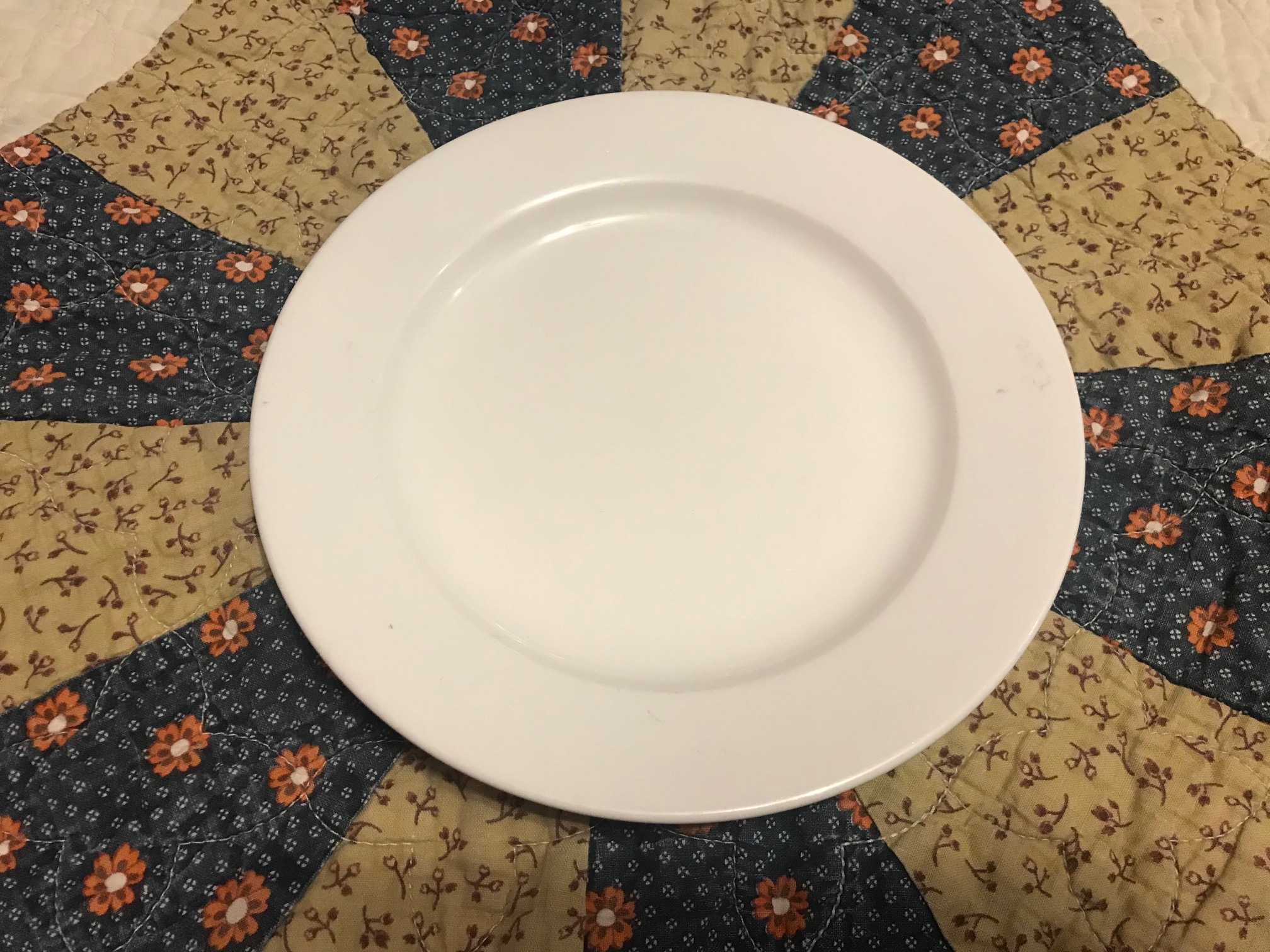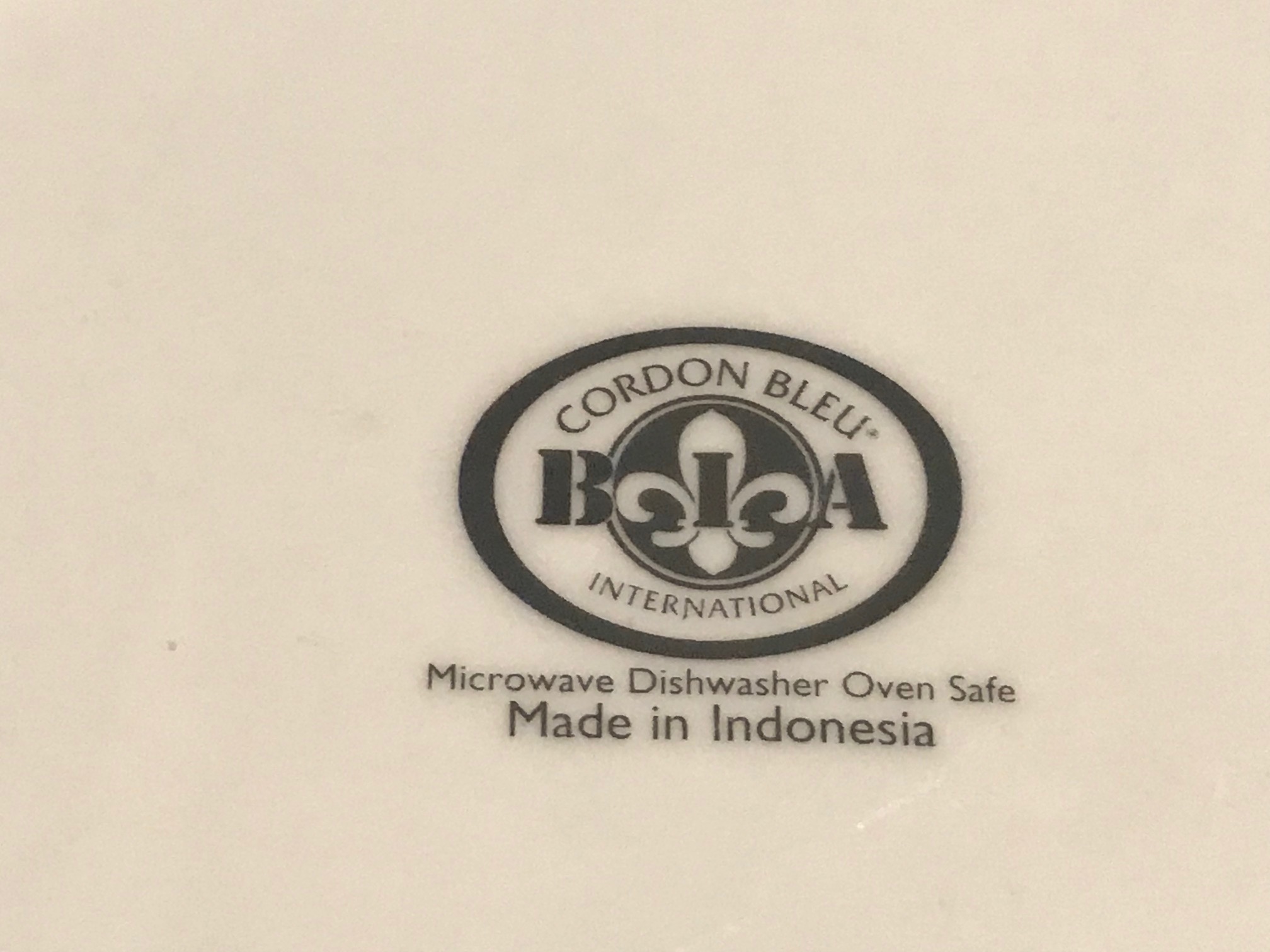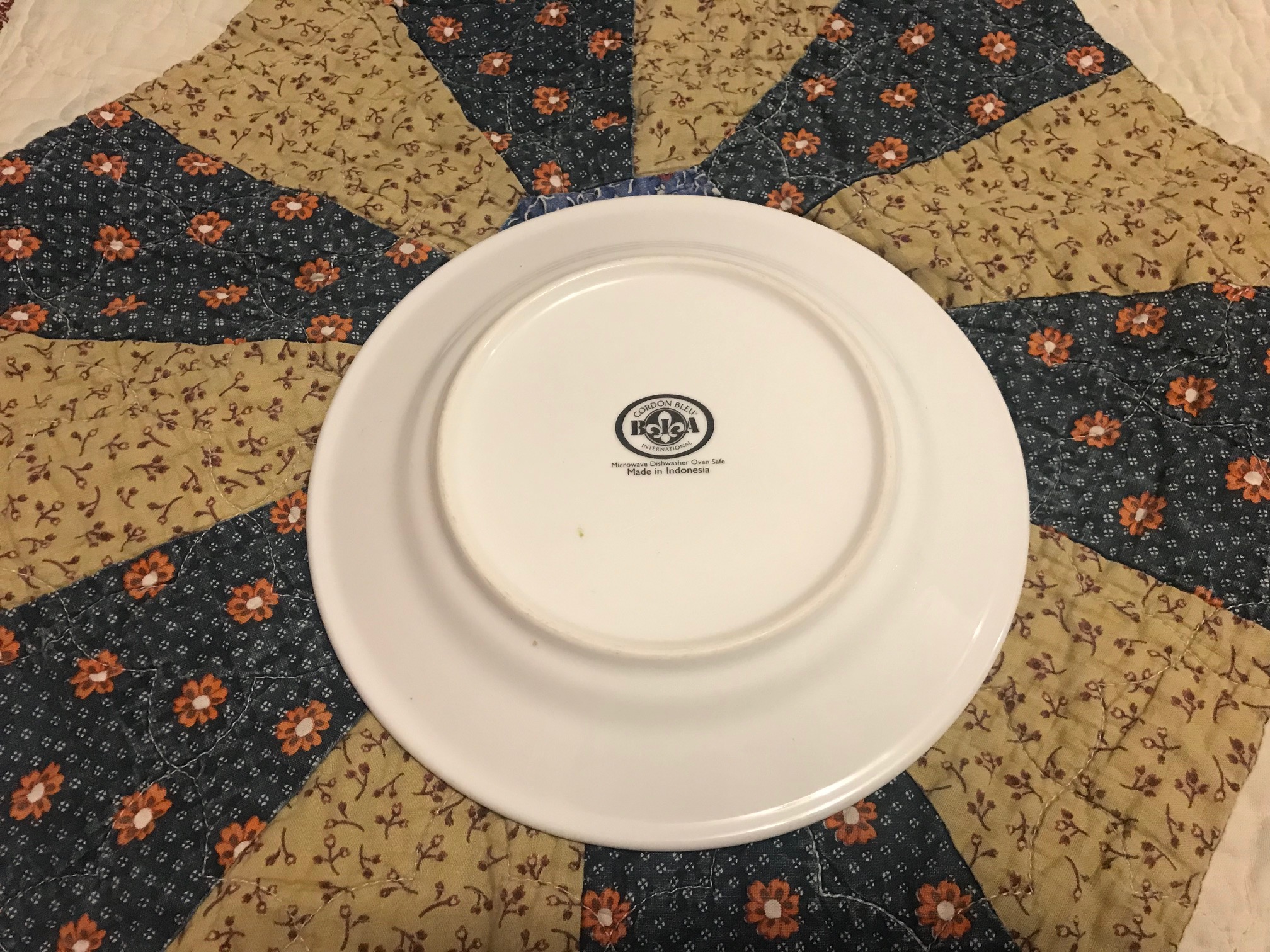BIA Cordon Bleu International Dish – Indonesia: 6,081 ppm Lead (in the back mark.) 90 is unsafe in items used by kids.
This plain white BIA Cordon Bleu International plate (purchased at New Seasons Market in Portland, Oregon – c. 2010 and “Made in Indonesia”) had the following readings when tested with an XRF instrument:
Bottom Logo (picture above):
- Lead (Pb): 6,081 +/- 145 ppm
- Mercury (Hg): Non-Detect / Negative
- Cadmium (Cd): Non-Detect / Negative
- Arsenic (As): Non-Detect / Negative
- Barium (Ba): Non-Detect / Negative
- Chromium (Cr): Non-Detect / Negative
- Antimony (Sb): Non-Detect / Negative
- Selenium (Se): Non-Detect / Negative
- Iron (Fe): 4,730 +/- 287 pm
- Vanadium (V): 73 +/- 21 ppm
- Titanium (Ti): 105 +/- 27 ppm
- Cobalt (Co): 3,142 +/- 199 ppm
Please note: This plate was purchased around 2010. I don’t know if newer products from this brand or this line specifically would have lead-free back marks/ logos, as I have not tested a newer version of this product.
In the past I had recommended this type of plate as a Lead-free option. The food surface of the plate IS completely Lead-free, however when I initially tested these plates I did not test the back mark (that is something I have only started doing in the past two years or so, once I noticed that many back marks had similar paint to the leaded type of raised paint on much decorated glassware.)
As with other similar plates a guideline to know if the back mark is Leaded is as follows: Can you feel it with your finger? If you can feel the back mark with your finger (on newer / non-vintage items specifically) it is very likely that the paint used is leaded. This is my experience from testing hundreds of items with similar raised markings.
The new Crate & Barrel plates are a good example of a recently made non-Leaded type of back mark. It is not raised, you cannot feel it with your finger as your run your finger over the back of the plate – and it appears to have been applied under the final clear coat of the glaze. Click HERE to see some more examples.
Food Surface Plain White Side Of Plate:
- Lead (Pb): Non-Detect / Negative
- Mercury (Hg): Non-Detect / Negative
- Cadmium (Cd): Non-Detect / Negative
- Arsenic (As): Non-Detect / Negative
- Barium (Ba): Non-Detect / Negative
- Chromium (Cr): Non-Detect / Negative
- Antimony (Sb): Non-Detect / Negative
- Selenium (Se): Non-Detect / Negative
- Iron (Fe): 499 +/- 130 ppm
- Bismuth (Bi): 67 +/- 12 ppm
- Vanadium (V): 70 +/- 18 ppm
- Titanium (Ti): 50 +/- 20 ppm
- Indium (In): 19 +/- 9 ppm
- Silver (Ag): 10 +/- 5 ppm
- Cobalt (Co): Non-Detect / Negative
Why is this much Lead a problem? – Especially since it is only on the back of the plate!
The amount of Lead that is considered unsafe in an item intended for use by children is anything 90 ppm Lead or higher in the paint, glaze or coating and anything 100 ppm Lead or higher in the substrate. Dishes are not regulated in the same way as items intended for use by children. United States regulatory agencies do not consider dishes to be “items intended for use by children.” As a result this amount of Lead (found anywhere on a dish) is not considered illegal in any way.
While the jury is out as to whether or not something like this may or may not be a problem consider this: the back marks of dishes wear. Where do they wear? Where does the material that wears off end up? In your cupboards? In your dishwasher? In your sink? On your table? In your food? Since no public agency or scientific body is looking at this as a possible concern AND since ALL scientific bodies have consensus in that they agree that there is no safe level of Lead exposure to children – it makes sense that there should be no lead at all in our dishes. As a result I personally choose to only own dishes that do not have any Lead at all – including in the back mark.
As always, please let me know if you have any questions.
Thank you for reading and for sharing my posts.
Tamara Rubin
#LeadSafeMama
Links to Amazon products are affiliate links. If you purchase something after clicking on one of these links I may receive a small percentage of what you spend at no extra cost to you. Thank you for supporting my work in this way.
Never Miss an Important Article Again!
Join our Email List






I have been searching on your site for a couple days. I am still confused on how the paint on the back of a plate is detrimental to your health. I clicked on the “click here” option for dishwashing information, hoping it would help me, but could not find an article about dishwashing. I did read in many places where you indicated that lead anywhere is bad. Is there an area on your website that specifically focuses on the dangers of lead in paint under a plate or on the side of a dish or coffee cup?
I found the answer to my question. The information I was looking for was under a post about a corningware casserole dish. I think my understanding of this matter is clearer now….